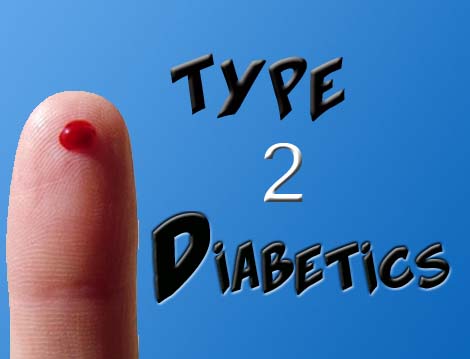 New Health Guide
New Health Guide
Symptoms like blurry vision, headache, dizziness, and fatigue may bother many people. These non-specific symptoms are common and may be caused by a wide range of conditions, which may or may not be serious. Here are some of the most common conditions that can cause both blurry vision and headache, among other things.
 Myopia or nearsightedness is a common visual disorder that affects people of all ages. You can see near objects clearly, but looking at objects that are farther away can give you blurry vision, headache and discomfort. Nearsightedness often develops gradually during childhood or adolescence, especially if you have a family history of the condition.
Myopia or nearsightedness is a common visual disorder that affects people of all ages. You can see near objects clearly, but looking at objects that are farther away can give you blurry vision, headache and discomfort. Nearsightedness often develops gradually during childhood or adolescence, especially if you have a family history of the condition.
Other symptoms may include:
Symptoms of myopia often improve when corrective lenses are used and when other reading habits, such as using adequate lighting, are practiced.
 Interruption of the blood supply to your brain can cause gradual or sudden changes such as blurry vision, headache, body weakness, dizziness and in severe cases, loss of consciousness. This condition is commonly known as a stroke, which causes your brain cells to be deprived of oxygen and other nutrients, leading to cell death. It is a medical emergency, so prompt treatment is important to prevent permanent brain damage and other complications. Other symptoms of stroke include:
Interruption of the blood supply to your brain can cause gradual or sudden changes such as blurry vision, headache, body weakness, dizziness and in severe cases, loss of consciousness. This condition is commonly known as a stroke, which causes your brain cells to be deprived of oxygen and other nutrients, leading to cell death. It is a medical emergency, so prompt treatment is important to prevent permanent brain damage and other complications. Other symptoms of stroke include:
 Ocular migraines cause temporary blindness, which may last for less than an hour, accompanied by a migraine headache. It usually affects one eye, causing blurry vision, headache, flashing lights, or blind spots. Symptoms may last for up to several hours. Your headache may affect one side of the head and may be pulsatile or throbbing in character, usually getting worse with activity.
Ocular migraines cause temporary blindness, which may last for less than an hour, accompanied by a migraine headache. It usually affects one eye, causing blurry vision, headache, flashing lights, or blind spots. Symptoms may last for up to several hours. Your headache may affect one side of the head and may be pulsatile or throbbing in character, usually getting worse with activity.
Other symptoms of ocular migraine include:
 Diabetes is a common condition that occurs when your body does not use insulin as it should or does not make enough insulin to facilitate the absorption of sugars. Normally, the body breaks down food into glucose, the cells' main source of energy. A hormone called insulin facilitates the absorption of glucose from the blood into the cells of the muscles and brain. In diabetes type 2, the body produces insulin but the cells may be resistant to its effects, thus glucose accumulates in the blood, causing high blood sugar levels.
Diabetes is a common condition that occurs when your body does not use insulin as it should or does not make enough insulin to facilitate the absorption of sugars. Normally, the body breaks down food into glucose, the cells' main source of energy. A hormone called insulin facilitates the absorption of glucose from the blood into the cells of the muscles and brain. In diabetes type 2, the body produces insulin but the cells may be resistant to its effects, thus glucose accumulates in the blood, causing high blood sugar levels.
Over a long time, diabetes can lead to organ damage and other complications, leading to a wide range of symptoms such as blurry vision, headache, loss of weight, and body weakness. Here are some of the symptoms caused by diabetes type 2:
 Acute inflammation of the sinuses (sinusitis) is often caused by infection and can last for less than four weeks. Sinusitis develops when inflammation, swelling, and mucus blocks your nasal passages, making it easier for bacteria, viruses or fungi to grow. These organisms produce gas, which accumulates in the spaces (sinuses) in the head causing a build-up of pressure and spread of infection. Allergies may also cause acute sinusitis. Symptoms often include blurry vision, headache, runny nose, and tenderness over the forehead or cheek, where the sinuses are located. Other symptoms may include:
Acute inflammation of the sinuses (sinusitis) is often caused by infection and can last for less than four weeks. Sinusitis develops when inflammation, swelling, and mucus blocks your nasal passages, making it easier for bacteria, viruses or fungi to grow. These organisms produce gas, which accumulates in the spaces (sinuses) in the head causing a build-up of pressure and spread of infection. Allergies may also cause acute sinusitis. Symptoms often include blurry vision, headache, runny nose, and tenderness over the forehead or cheek, where the sinuses are located. Other symptoms may include:
 Glaucoma is a serious condition that can cause blindness, and therefore it is considered a medical emergency. In this condition, fluid gets trapped in the eye, causing a build-up of pressure that can destroy the optic nerve. Acute angle-closure glaucoma often causes sudden eye pain, eye redness, blurry vision, headache and nausea. Symptoms often develop within hours. Other symptoms include:
Glaucoma is a serious condition that can cause blindness, and therefore it is considered a medical emergency. In this condition, fluid gets trapped in the eye, causing a build-up of pressure that can destroy the optic nerve. Acute angle-closure glaucoma often causes sudden eye pain, eye redness, blurry vision, headache and nausea. Symptoms often develop within hours. Other symptoms include:
 Acute stress disorder is a common condition that can affect anyone. Sometimes, the body’s response to a stressful situation is physical, causing rapid heartbeat, shortness of breath, blurry vision, headache, and anxiety. These reactions may occur after a severe or stressful event such as a natural disaster, physical violenceor the death of someone you love. Other symptoms include:
Acute stress disorder is a common condition that can affect anyone. Sometimes, the body’s response to a stressful situation is physical, causing rapid heartbeat, shortness of breath, blurry vision, headache, and anxiety. These reactions may occur after a severe or stressful event such as a natural disaster, physical violenceor the death of someone you love. Other symptoms include:
 Regularly drinking caffeinated drinks such as coffee or tea can make your body get used to their stimulating effects. If you stop taking these at once, you may get symptomsof caffeine withdrawal, such as blurry vision, headache, fatigue, and bad moods. Fortunately, these problems fade within a few days. Other symptoms include:
Regularly drinking caffeinated drinks such as coffee or tea can make your body get used to their stimulating effects. If you stop taking these at once, you may get symptomsof caffeine withdrawal, such as blurry vision, headache, fatigue, and bad moods. Fortunately, these problems fade within a few days. Other symptoms include:
 If you have sleep apnea, you stop breathing many times while sleeping. These short episodes can last a few seconds but may happen up to 30 times or more in an hour. When your breathing stops, your airway collapses and blocks the flow of oxygen into and out of your lungs. Sleep apnea may cause you to wake up frequently throughout the night, and lead to daytime symptoms blurry vision, headache, daytime sleepiness and fatigue. If not treated, it can raise your risk for heart disease or other serious health problems. Other symptoms include:
If you have sleep apnea, you stop breathing many times while sleeping. These short episodes can last a few seconds but may happen up to 30 times or more in an hour. When your breathing stops, your airway collapses and blocks the flow of oxygen into and out of your lungs. Sleep apnea may cause you to wake up frequently throughout the night, and lead to daytime symptoms blurry vision, headache, daytime sleepiness and fatigue. If not treated, it can raise your risk for heart disease or other serious health problems. Other symptoms include:
 High blood pressure is a common condition that often occurs with age. However, some factors can increase your risk such as having a family history, being overweight, heavy drinking, poor diet, and lack of exercise. If left untreated, it can damage your arteries, heart, and kidneys and increase your risk for stroke and heart attack. Symptoms include:
High blood pressure is a common condition that often occurs with age. However, some factors can increase your risk such as having a family history, being overweight, heavy drinking, poor diet, and lack of exercise. If left untreated, it can damage your arteries, heart, and kidneys and increase your risk for stroke and heart attack. Symptoms include: